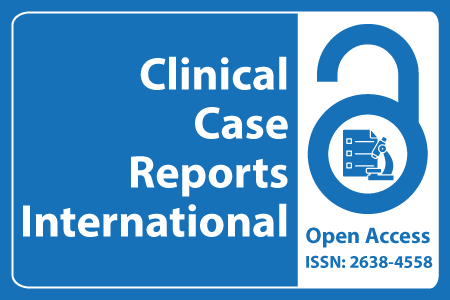
Journal Basic Info
- Impact Factor: 0.285**
- H-Index: 6
- ISSN: 2638-4558
- DOI: 10.25107/2638-4558
Major Scope
- Respiratory Medicine
- Hepatitis
- Medical Radiography
- Pulmonary Medicine
- Renal Disease
- Nutrition and Dietetics
- Pharmacology and Therapeutics
- Geriatric Medicine
Abstract
Citation: Clin Case Rep Int. 2023;7(1):1641.DOI: 10.25107/2638-4558.1641
Tracheostomy in Patients with Traumatic Brain Injury in the Neurosurgery Intensive Care Unit: Planning and Results
Rivka ML
NICU- Neurosurgery Intensive Care Unit, Sheba Medical Center, Israel
*Correspondance to: Mor Levi Rivka
PDF Full Text Review Article | Open Access
Abstract:
Introduction: In 2020-2021, about 95% of the hospitalizations in the Neurosurgical Intensive Care Units (NICU) were cases of trauma, tumors, bleeding, etc. Patients with Traumatic Brain Injury (TBI) will usually need alternate airways. Percutaneous tracheostomy is a common procedure performed in the NICU in patients with TBI to secure the airway. The benefit of early tracheostomy over late and the timing itself are controversial. In this study we will analyze the effect of early versus late tracheostomy in patients with TBI and the associated patient outcomes in terms of length of hospital stay, length of ICU stay, duration of mechanical ventilation, and hospital mortality. Purpose: The aim of the study is to analyze the effect of early tracheostomy vs. late tracheostomy on patients with TBI in the neurosurgery intensive care unit and the patient-related outcomes in terms of length of hospital stay, length of stay in intensive care, duration of mechanical ventilation, and in-hospital mortality between the early and late tracheostomy group. Method: A retrospective study that will collect data over a two-year period for the years 2020- 2021. The patients will be divided into two groups; Those who underwent tracheostomy within 10 days after endotracheal intubation are assigned to the early tracheostomy group and those who underwent tracheostomy after 10 days of intubation are assigned to the late tracheostomy group. Results: Out of 858 patients, 273 (31.8%) underwent tracheostomy. 17.6% early and 82.4% late. The length of stay in intensive care is on average longer for the late group: 26.7 days compared to 19.6 in the early group (p<0.001). The duration of hospital stay was measured from the beginning of hospitalization and on average was longer for the latter group: 49.4 days compared to 38.5 days (p=0.003). The duration of mechanical ventilation is on average longer for the late group: 32.3 days compared to 21.7 for the early group p<0.001)). In-Hospital Mortality in a 3-month post-TBI mortality analysis, it was found that early cannula was not associated with a significant reduction in mortality. However, it was found that each day's delay in the timing of tracheostomy was associated with a 6% increase in the risk of mortality. Discussion and Conclusions: This increased need for tracheostomy in the TBI population is attributed to a higher rate of extubation failure and the need for prolonged airway protection secondary to neurologic injury. In the initial phase, the goal is to manage acute intracranial emergencies, and tracheostomy at this phase may increase intracranial pressure and adversely affect outcomes.
Keywords:
#
Cite the Article:
Rivka ML. Tracheostomy in Patients with Traumatic Brain Injury in the Neurosurgery Intensive Care Unit: Planning and Results. Clin Case Rep Int. 2023; 7: 1641.













